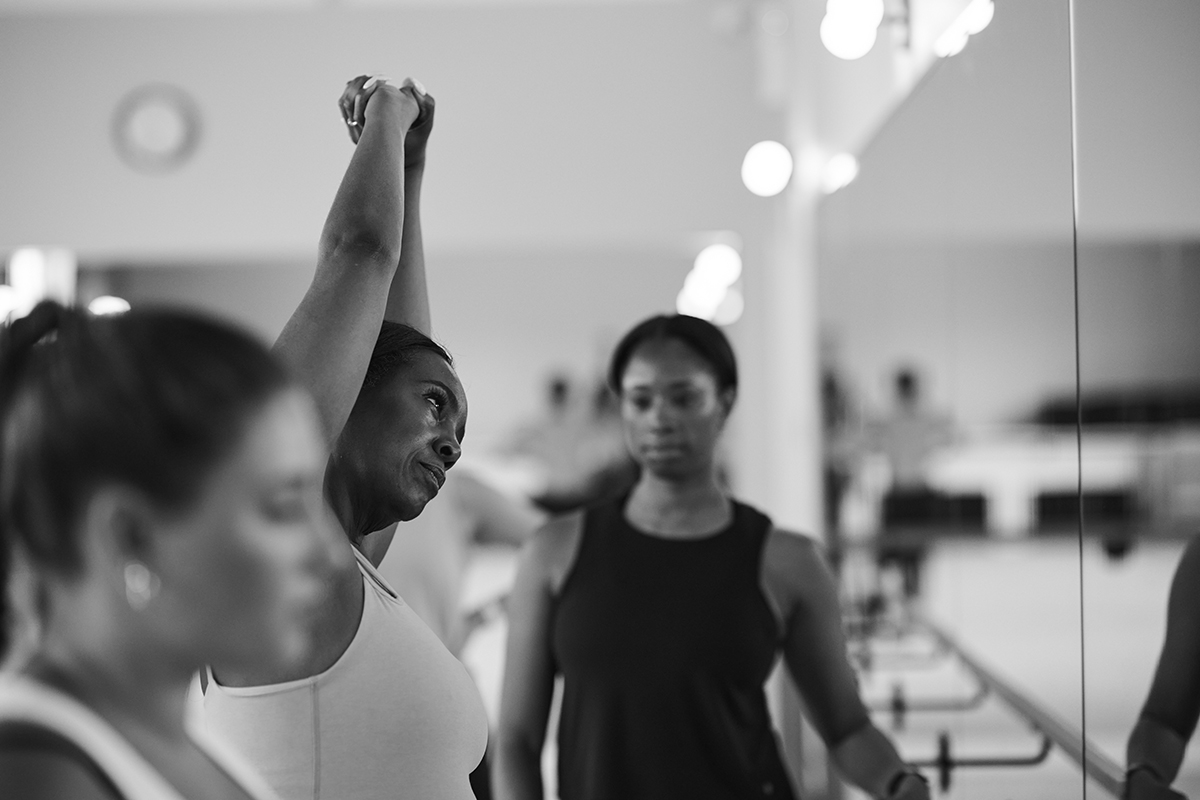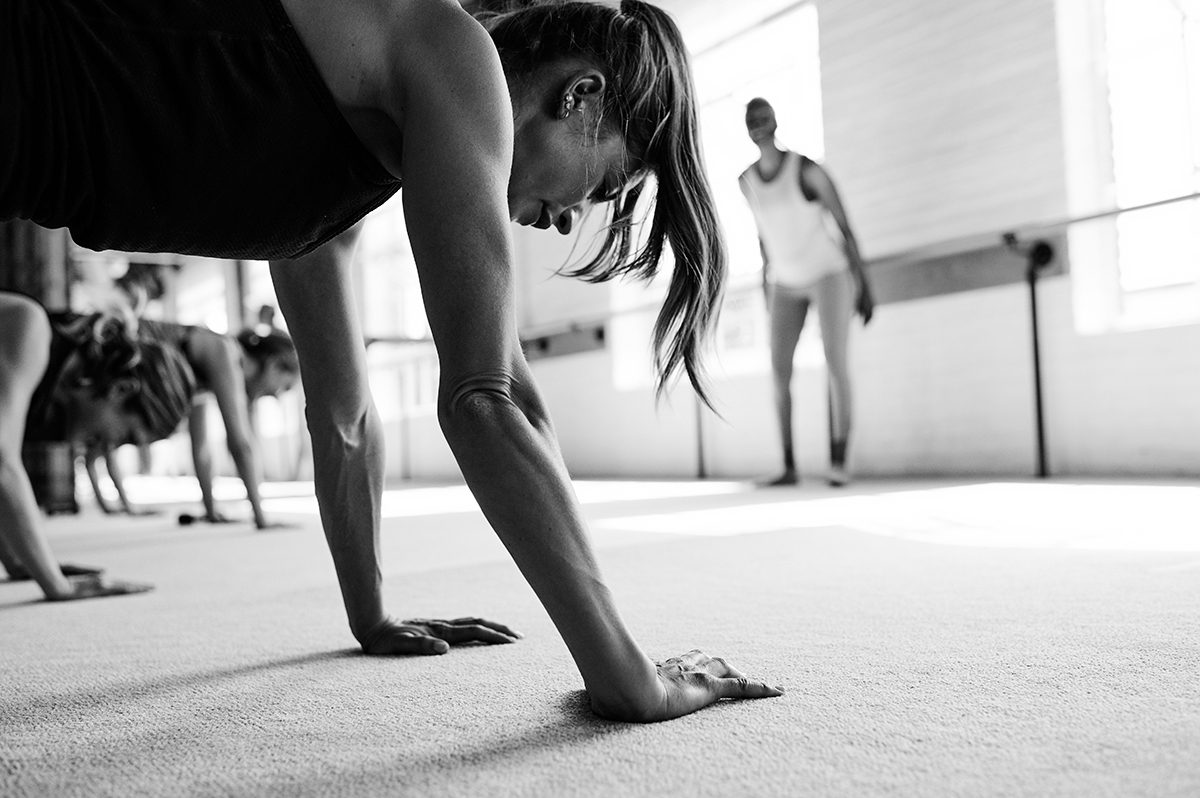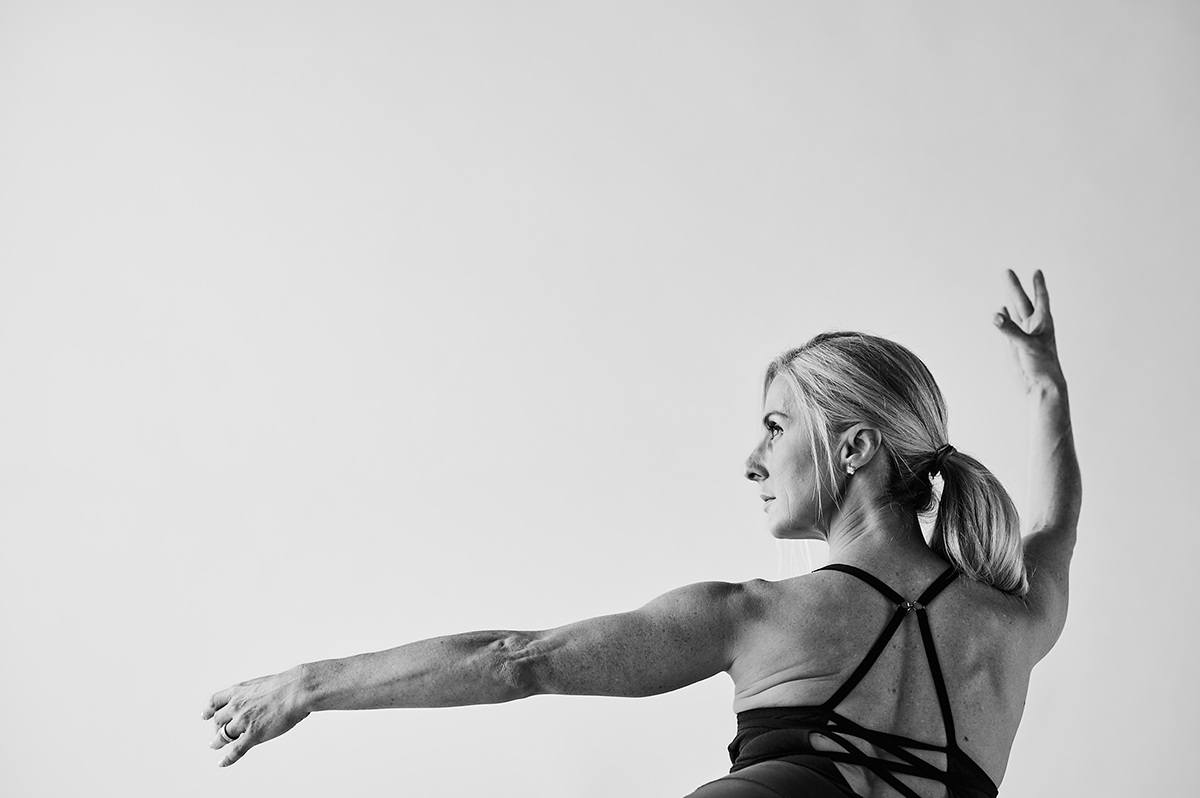New clients! For a limited time, Get 13 Classes for $78 (only $6 per class)
The Ultimate Beginner Barre Glossary

If you’re new to barre lingo or sometimes wish you brought a dictionary along with your grippy socks to class, you’re not alone. Barre classes tend to have their own special language that takes a bit of experience to become familiar with.
We want you to come to The Bar Method and feel ready to get a head-to-toe sculpt and feel the burn without stressing about what the heck your instructor is talking about. We’ve compiled a list of common terms used throughout any Bar Method class to create the ultimate beginner barre glossary. Get ready to become fluent in barre!
In this article:
Adjustments
We’re big on adjustments at The Bar Method. One of the best things about our instructors is their use of both verbal and hands-on adjustments. These are meant to keep you safe and in your best form to feel that burn in a way that’s accessible and comfortable for you.
Back Dancing
Back dancing is the last push of the class before the final stretch. Not only will it sculpt your glutes and hamstrings one final time in class, but it also mobilizes the spine and opens the hip flexors.
Curl
Think of curl as your chance to really get your core muscles fired up. Different curl positions target certain aspects of the abdominal muscles more than others, but all moves in curl work will strengthen your entire core.
Extend
This is when you open the angle of a joint. You are extending that joint. In a class setting, this may look like going from a bent knee to a straight leg.
Final Stretch
Every Bar Method class ends with a final stretch that often incorporates a strap for assistance and extra leverage to deepen the stretch. This final stretch helps to increase your overall range of motion and flexibility and helps to begin the restorative process for your muscles post-class.
Flatback
Flatback is all about bringing your heart rate up and recruiting your TA muscles, the transversus abdominus. The TA is the deepest abdominal muscle which can often be tricky to activate. During flat-back try to really focus on your breathing to get those deep muscles fired up!
Flex
Like point, flex is another foot position. Flexing is when you pull your toes up toward your shin giving you a calf and hamstring stretch.
Grip Your Glutes
At the Bar Method, there’s a subtle difference, but important, between when your instructor says grip your glutes versus tuck. Gripping your glutes is a smaller action and basically means turning the corners of your seat to engage your core and protect your back during exercises like shoulder walks or bicep curls.
Grippy Socks
At The Bar Method our studio rooms are carpeted which means that students are required to wear socks. Grippy socks, specifically, are not a requirement and you can wear any pair of socks, but the extra stickiness will help you keep from slipping around.
Hands-On Adjustments
Whether it’s your first class or 500th, expect to receive hands-on adjustments from your instructor. We emphasize hands-on adjustments in class because they can help you with your mind-body connection as well as making the exercise more effective.
Heel Lifts
Heel lifts can help you warm up the calves to help support your knees during thigh work. This is especially important in high heel thigh sets when the calves are heavily engaging to help stabilize the quads and contract the hamstrings. Heel lifts can also help in toning your calves, hamstring, and seat.
Isometric
A muscle contraction against resistance that doesn’t involve a change in the muscle length or joint position. Think contracting your glutes to create small movements in foldover. This is why we encourage you to move 1-inch increments to keep the contraction isometric.
L-Shape
During round-back you’ll be given the option to take the L-Shape for an added challenge if your extended leg is vertical. This just means hovering your bottom leg off the floor in line with your hip.
Initial Leg Lifts
All Bar Method classes begin with leg lifts to raise your heart rate and prepare your body for the upcoming movements. Even if you arrive to class late, you are still required to do leg lifts before joining the class.
Modifications
Bar Method loves modifications! It doesn’t matter where you are on your fitness journey, modifications can be a very helpful and necessary tool. Whether you’re recovering from an injury, are pre or postnatal, or even just beginning on your barre journey, your instructor will offer modification options throughout your class.
Parallel
This stance is used in both exercises and stretches in a Bar Method class. It helps to create proper alignment from the ground up. To do this, place your feet directly under your hips with your feet and knees facing forward.
Point
Point is when you extend your toes away from your shin. This is another foot position used throughout many Bar Method classes.
Pretzel
This one always makes us hungry. Pretzel in barre is a seat exercise used for targeting the side of your seat as well as your obliques and upper back.
Pulse Tempo
This movement is often to the beat of the music in class and is done with a very small range of motion, typically up and down.
Relevé
In relevé, think of coming to the balls of your feet or tippy toes. This movement can be started with your feet in either first position or parallel. Press through the balls of your feet and focus on keeping your legs strong, lengthened, and externally rotated.
Riser
A riser can be helpful during various exercises. They are often used for wrist comfort during reverse push-ups, push-ups, floor zinger, and more! If you are petite, they can give you the perfect extra boost during an exercise like standing seat. During roundback and flatback a riser can help alleviate any hip discomfort and give you a little extra height. They are also super helpful during curl, depending on the natural curve of your back. While all bodies are a little bit different and people will use riser mats for different exercises, don’t be surprised if your instructor brings a riser mat over to you during class at some point!
Roundback
Think of round-back as a sneaky bonus round of thigh work. It also typically follows seat work! The exercise works both your legs and core muscles at the mid-way point in class. It can be a beneficial stretch to the posterior part of the body, like your glutes and hamstrings, after intense seat work.
Seat
When your instructor talks about your seat, think of your glutes. Seatwork is a common scenario in any Bar Method class. Most seat exercises work on your hamstrings, the long muscle down the back of your upper leg, as well as variations of your glutes and outer glutes.
Stall Bar
All Bar Method studios are equipped with stall bars, those ladder-like contraptions you see in the studio room. Depending on your body, certain exercises might actually be better for you at the stall bar. For example, if you have tight hamstrings and struggle to straighten your legs during the stretch at the bar, heading to the stall bar can make a huge difference in making the stretch more comfortable and a better fit to your body.
Strap
There are a few different points in class where you might see straps used. Straps can be helpful during exercises such as round-back to help you further lengthen your legs, depending on your hamstring flexibility. You might see a variation of fold-over using the straps which adds an extra stability challenge for your core. Some students prefer flatback with straps for extra shoulder comfort, depending on their positioning under the bar. Most classes end with a final stretch using the straps as a tool to stretch out the muscles you just worked during class.
Stretch at the Bar
Before heading into thigh work, you’ll do a long stretch series, stretch at the bar. This is to help strengthen the muscles being stretched while also increasing flexibility throughout your body.
Stretches
Besides the final stretch at the end of class there are a few points in class where you’ll do the stretches. The placement of these stretches throughout class is to increase flexibility and release muscles that you just worked.
Thigh Work
As the name suggests, thigh work is all about working your thighs! Different exercises will target different parts of your quads.
Tuck
This term is used in a variety of ways in a Bar Method class. It means to roll your tailbone under, grip your gluteus muscles, and pull your abdominals up and in toward the spine. Make sure to keep your lower back neutral and to avoid over-tucking and putting strain on your hip flexors.
Verbal Adjustments
Don’t be surprised if you hear your instructor call out your name during class. A super unique and amazing thing about Bar Method classes is that instructors use names and give verbal adjustments. At first it might feel a bit weird to hear your name being called during class, but don’t worry! Both newbies and veterans receive tons of verbal adjustments.



